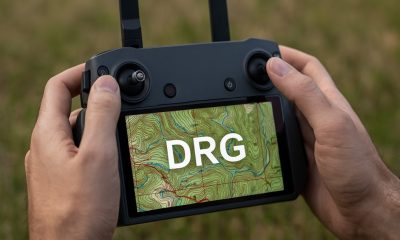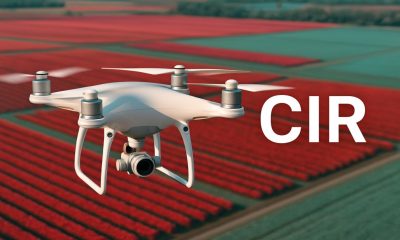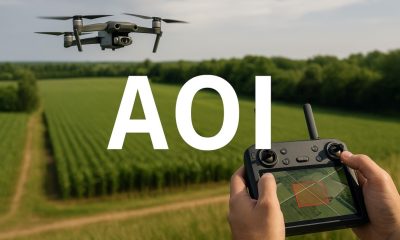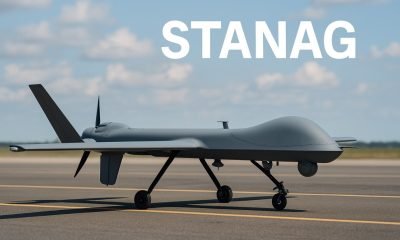- Acronym Guide
- AAM
- ABS
- AC
- ACAS
- ADS-B
- AFAC
- AGL
- AI
- AIM
- ALS
- AM
- AMA
- ANSP
- AOI
- APPI
- AUV
- AUVSI
- ARPAS-UK
- ASTM
- ATC
- BVLOS
- CAA
- CAAC
- CAB
- CASA
- CATT
- CBO
- CBR
- CBRN
- CDMA
- CDR
- CFR
- CIR
- COA
- COMINT
- CORS
- COTP
- COTR
- CPTED
- CV
- C2
- DAA
- DEM
- DFI
- DFS
- DGCA
- DHS
- DOD
- DPA
- DPEs
- DRG
- DRO
- DSM
- DSMX
- DSP
- DSSS
- DTM
- EASA
- EFT
- EO
- EOD
- EO/IR
- ELINT
- EMI
- ESC
- EVLOS
- eVTOLs
- FAA
- FCC
- FCS
- FHSS
- FICCI
- FLIR
- FOB
- FOV
- FPS
- FPV
- GBDAA
- GCP
- GCS
- GDPR
- GML
- GNSS
- GPS
- GSD
- GVC
- HDR
- HOGE
- IACRA
- ICAO
- ICS
- IMU
- INS
- IR
- ISA
- ISR
- ITU
- JARUS
- LAAMS
- LAANC
- LAATM
- LAI
- LBA
- LIDAR
- LOS
- LSALT
- MAC
- MAVLink
- MLIT
- MMS
- MSL
- MTOM
- NDAA
- NCSL
- NFZ
- NIST
- NMEA
- NOTAM
- NPA
- NPRM
- NTIA
- OBIA
- OEM
- OFDM
- OOP
- PASM
- PAV
- PCV
- PdM
- PEC
- PIC
- PID
- PIPL
- PLD
- PM
- PN
- PPK
- PPS
- PSM
- PWM
- UAM
- UAOP
- UAS
- UASTM
- UAV
- UCAVs
- UHD
- UHF
- USV
- UTM
- RAIM
- RCC
- RCS
- RFI
- ReOC
- RePL
- RMS
- ROI
- RPAS
- RPC
- RTH
- RTK
- SaR
- SAR
- SARP
- SBAS
- S.Bus
- SBIR
- SEDENA
- SfM
- SFOC
- SIGINT
- SLAM
- SMS
- SORA
- STANAG
- STTR
- sUAS
- TCAS
- TCCA
- TFR
- TIN
- TOF
- TP
- TPS
- TSA
- VHF
- VLOS
- VTOL
Drone Acronyms
What is UAS (Unmanned Aircraft System) & How Does it Work?
By
Jacob StonerTable Of Contents

Definition
An Unmanned Aircraft System (UAS) refers to the complete set of equipment necessary for the operation of an unmanned aircraft. This includes the UAV (Unmanned Aerial Vehicle), the ground-based controller, and the system of communications linking the two.
UAS Relevance to the Industry
The concept of UAS is crucial for understanding how drones are integrated into various applications. It emphasizes the need for a cohesive system where the drone, control station, and communication links work together seamlessly. This holistic approach is vital for complex operations such as military surveillance, commercial deliveries, and scientific research.
How Does a UAS Work?
Unmanned Aircraft Systems (UAS) consist of multiple components that work together to enable the operation of an unmanned aerial vehicle (UAV). Here’s an in-depth look at how a UAS functions:
1. System Components
- Unmanned Aerial Vehicle (UAV): The flying component, which can be a fixed-wing aircraft, a rotary-wing (e.g., quadcopter), or a hybrid.
- Ground Control Station (GCS): The control center where operators manage and monitor the UAV’s flight. It includes software for flight planning and control interfaces.
- Data Link: The communication channel that connects the UAV to the GCS, enabling real-time data transmission and control commands.
2. UAV Structure and Propulsion
- Airframe: The body of the UAV, designed to be lightweight yet durable. It houses all the necessary components and provides aerodynamic stability.
- Propulsion System: Comprises motors and propellers or, in some cases, jet engines. This system generates the necessary thrust to lift and maneuver the UAV.
- Power Source: Typically batteries for electric UAVs or fuel tanks for larger, combustion engine-powered UAVs.
3. Navigation and Control Systems
- Autopilot System: The onboard computer that controls the UAV’s flight path, altitude, and speed based on pre-programmed instructions or real-time commands. It uses sensors like gyroscopes, accelerometers, and GPS for precise control.
- Remote Control: Operators can manually control the UAV via a remote control interface or a computer at the GCS, sending commands through the data link.
4. Communication Systems
- Data Link: Facilitates two-way communication between the UAV and the GCS, transmitting telemetry data (e.g., position, speed, altitude) and receiving control inputs.
- Telemetry System: Provides real-time feedback on the UAV’s status and environmental conditions, crucial for monitoring and decision-making during the flight.
5. Operational Phases
- Pre-Flight Planning: Operators define the mission parameters, including flight path, waypoints, altitude, and specific tasks (e.g., data collection points). This information is uploaded to the UAV’s autopilot system.
- Takeoff and Launch: The UAV can be launched manually or autonomously, using pre-programmed procedures to reach the desired altitude and start the mission.
- Mission Execution: The UAV follows the pre-defined flight path, collecting data and performing tasks as programmed. Operators at the GCS monitor the UAV’s performance and can make real-time adjustments as needed.
- Data Collection: Sensors and cameras on the UAV capture images, videos, or other data, transmitting it back to the GCS for analysis or storage.
- Landing and Recovery: The UAV returns to a designated landing zone, guided by either autonomous systems or manual control. Safe landing procedures ensure the UAV is ready for future missions.
6. Applications and Use Cases
- Surveillance and Security: Monitoring large areas for security purposes, border patrol, and emergency response.
- Environmental Monitoring: Collecting data on weather, climate, and wildlife.
- Agriculture: Surveying crops, analyzing soil health, and managing irrigation.
- Infrastructure Inspection: Inspecting power lines, pipelines, and bridges for maintenance and safety.
- Delivery Services: Transporting goods and medical supplies quickly and efficiently.
Understanding the workings of a UAS highlights its complexity and versatility, showcasing its significant impact on various industries and its potential for future innovations.
Example in Use
“Implementing a UAS for crop monitoring allows for real-time data collection and efficient farm management.”
Frequently Asked Questions about UAS (Unmanned Aircraft System)
1. Are drones and UAS the same?
Answer: No, drones and UAS are not exactly the same. A drone, or UAV (Unmanned Aerial Vehicle), refers specifically to the aircraft that operates without a human pilot on board. In contrast, a UAS (Unmanned Aircraft System) includes the drone itself as well as all the additional components necessary for its operation, such as the ground control station, communication systems, and other supporting technologies. The term UAS emphasizes the integrated system needed to manage and operate the drone effectively.
2. Are UAS considered aircraft?
Answer: Yes, UAS are considered aircraft. According to aviation authorities such as the Federal Aviation Administration (FAA) and the International Civil Aviation Organization (ICAO), UAS are classified as aircraft because they operate in the airspace and perform similar functions to manned aircraft. This classification subjects them to various regulations and safety standards designed to ensure safe and efficient use of airspace.
3. What is an example of UAS?
Answer: An example of a UAS is the DJI Matrice 300 RTK system. This system includes:
- The UAV (DJI Matrice 300 RTK): A high-performance drone equipped with advanced sensors and cameras for industrial applications.
- Ground Control Station: The DJI Smart Controller Enterprise, which provides a user interface for operating the drone and accessing real-time data.
- Communication System: The OcuSync Enterprise technology for robust and long-range communication between the drone and the controller.
This acronym is used in various industries for tasks such as infrastructure inspection, public safety operations, and environmental monitoring.
For examples of these acronyms visit our Industries page.
As the CEO of Flyeye.io, Jacob Stoner spearheads the company's operations with his extensive expertise in the drone industry. He is a licensed commercial drone operator in Canada, where he frequently conducts drone inspections. Jacob is a highly respected figure within his local drone community, where he indulges his passion for videography during his leisure time. Above all, Jacob's keen interest lies in the potential societal impact of drone technology advancements.











